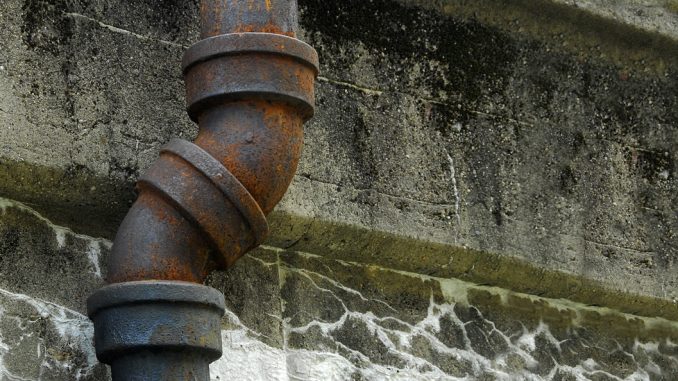
Corrosion can impact pipes everywhere and anywhere. From vast pipelines traversing oceans to Mrs Jones’ casting iron toilet waste pipe. The good news is, no matter whether you are dealing with millions of pounds of infrastructure or a dodgy lavatory, a rust hole in a pipe can be easy to repair.
Most rust holes appear from the inside of the pipe. As the contents passes through the pipe, it reacts with the metalwork to eat away and weaken it. The pipe eventually becomes so brittle that corrosion can breach it, leading rust holes to appear.
The natural reaction of most people when they realise they have a leak caused by a rust hole is to find a plumber to make a repair. Plumbers though do not come cheap; and in a cost of living crisis, we are beginning to see more people undertaking their own DIY pipe repairs.
If a rust hole in your pipe is causing you problems, then read on to find out how to make a quick and permanent repair using an epoxy putty.
What is epoxy putty?
Epoxy putty is a repair compound made up of two components – resin and hardener. When the two are mixed together, a reaction takes place which transforms epoxy putty from a soft material which can be easily shaped and formed into one as hard as steel.
Different epoxy putties can be formulated for different cure times. When it comes to rust hole repair, a fast-working epoxy in an easy-to-use format like a Superfast Steel Epoxy Putty Stick can seal a hole in a pipe in under 10 minutes.
Preparing the pipe
Before using epoxy putty to repair the rust hole, the pipe surface has to undergo a small degree of preparation. This involves cleaning it of dirt, grime and rust to aid the adhesion of the putty.
Sandpaper, a file or a silicon carbide strip can be used to abrade the pipe. The pipe also needs to be dried off. Most epoxy putties struggled to bond with wet surfaces, unless they have been specifically made for underwater application.
Obviously, this makes epoxy putty unsuitable for use in rust hole repair where you cannot turn water pressure off. If this is the case, then you instead need a live leak repair method using a waterproof silicone pipe repair tape.
Mixing the epoxy putty
If you are using an epoxy putty stick like Superfast Steel, then the resin and hardener are supplied pre-measured and combined. Simply cut off the amount of putty required from the stick and start kneading it by hand to spark the chemical reaction.
Two-part epoxy putties like Milliput supply the resin and hardener separately. You would take equal amounts from the two components and mix in a 1:1 ratio.
Successful mixing is indicated when the putty turns to a streak free, uniform colour. It is then time to apply it to the pipe.
Using epoxy putty to fill a rust hole
Once mixed and whilst still soft, the epoxy putty should be spread over the rust hole. Be careful not to push it too deep into the hole, otherwise there is a risk that the pipe will become blocked.
Ensure there is a good seal around the edges of the rust hole and then leave the putty to set. With a fast-working epoxy like Superfast Steel, this will take only 5 to 10 minutes. Putties like Milliput have a much longer cure of between two and three hours.
Once the putty has fully hardened, the pipe can be put back into service. It is however advisable to wait a little bit before running water back through the pipes.
Most putties will advise a functional cure time and a full cure time. If possible, wait for the full cure before restoring pressure to allow the epoxy to reach maximum properties.
Additional treatment for a pipe rust hole
The sealing security of epoxy putty can be enhanced by protecting the pipe further with a composite pipe repair wrap such as SylWrap HD.
A composite repair wrap is a specialist bandage with a water activated resin. Once wetted, the bandage begins to set rock hard. As it cures, it can be wrapped around the area of pipe repaired with epoxy putty to form a protective outer shell.

Leave a Reply